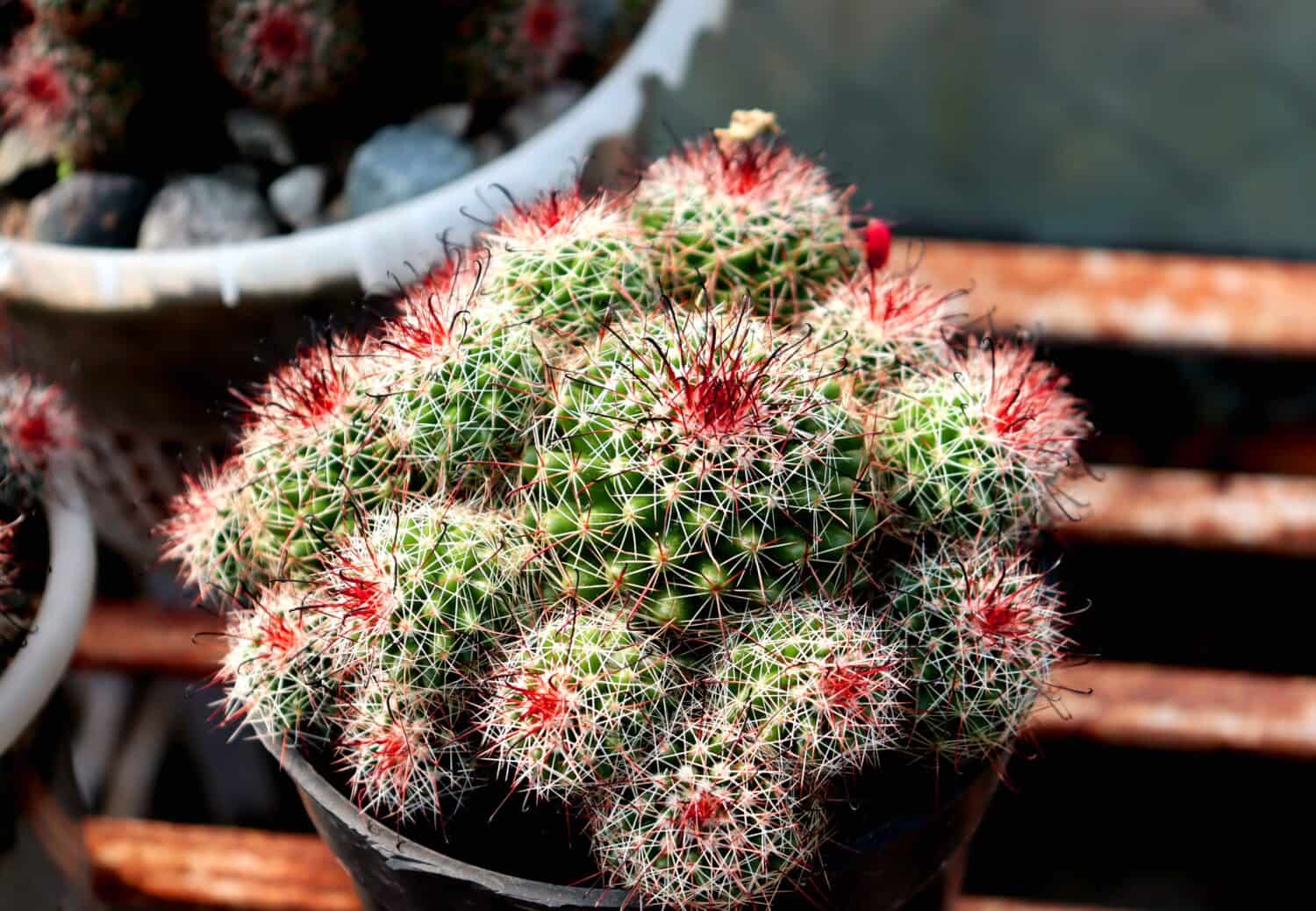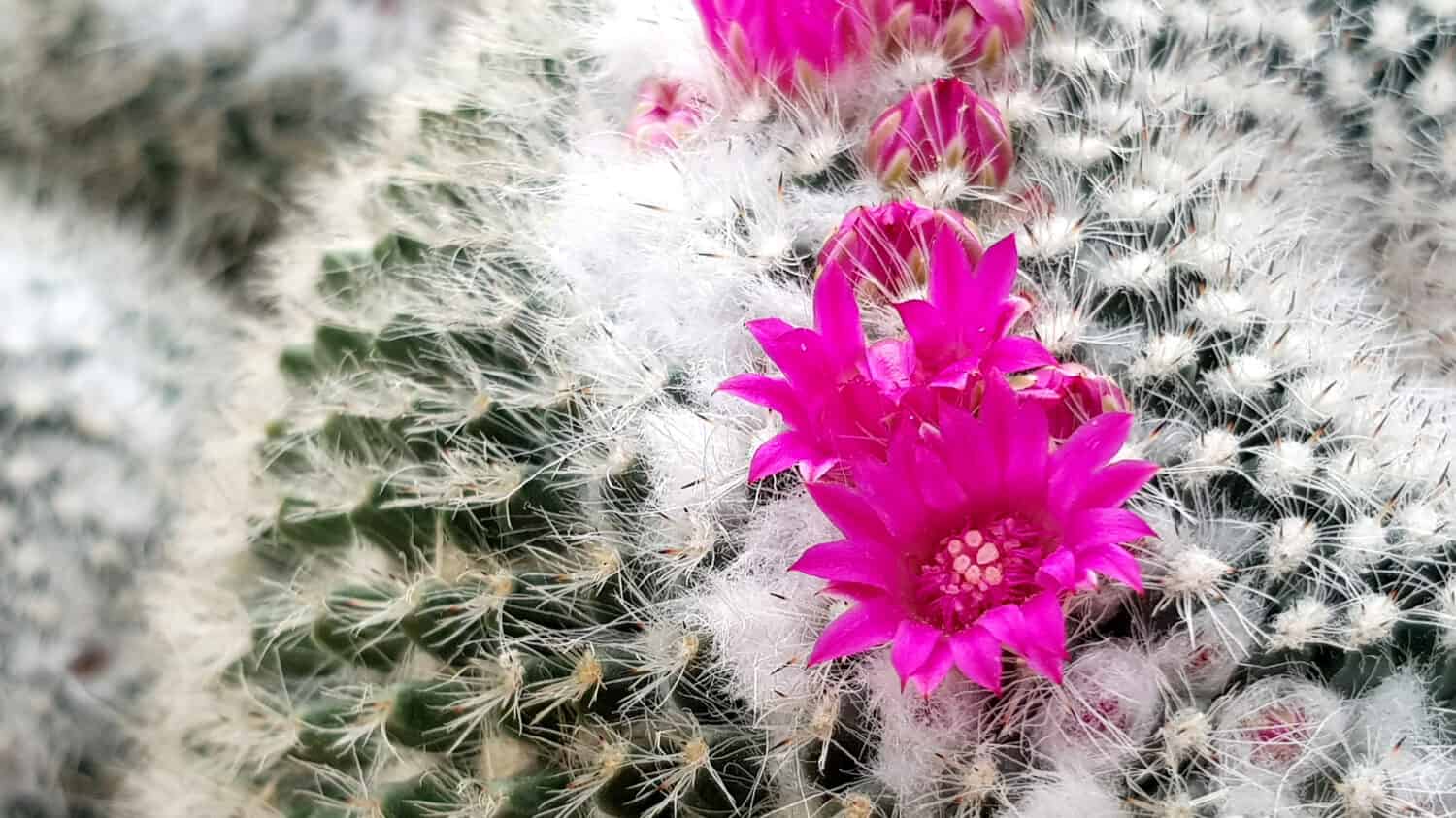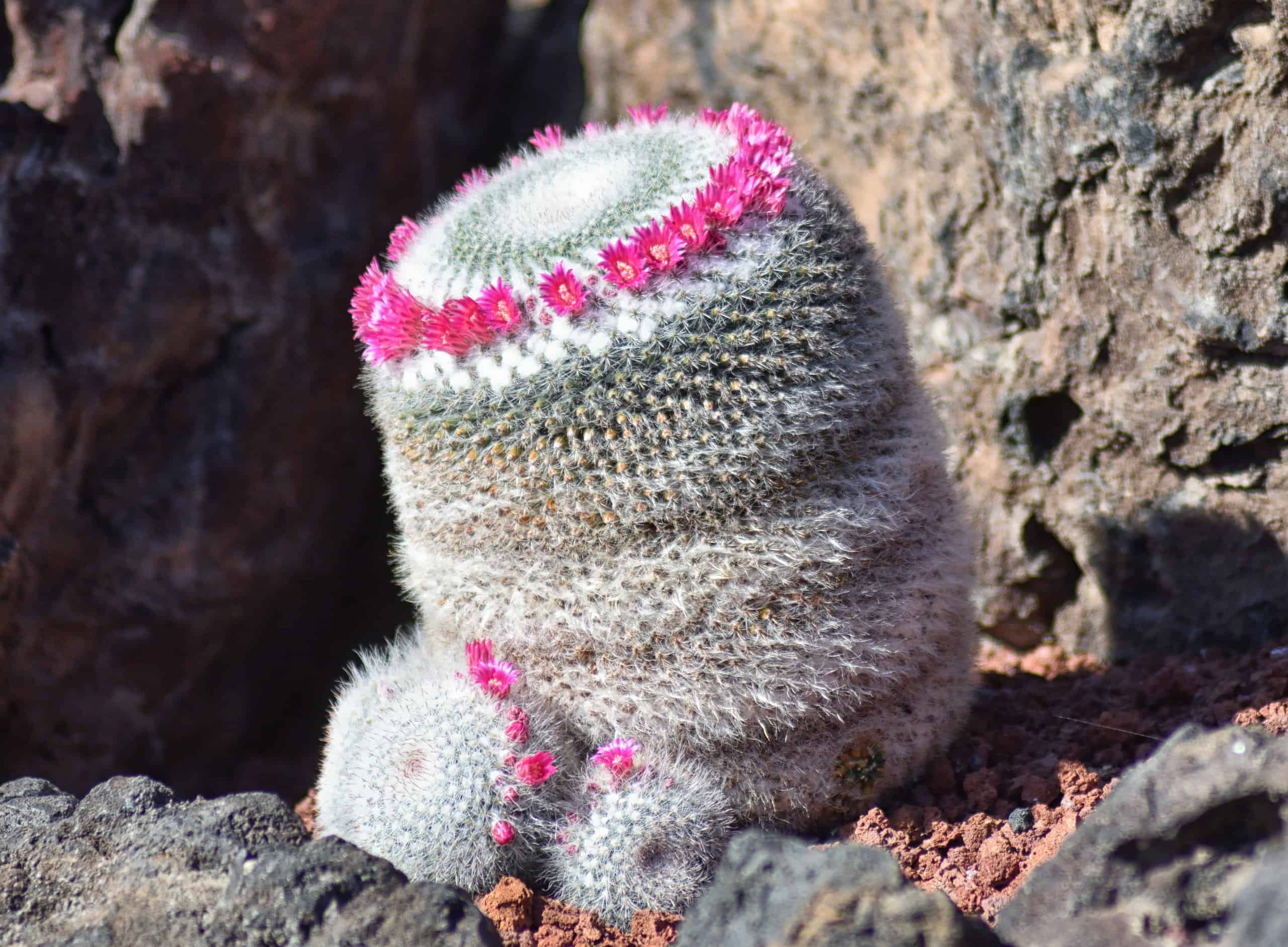Have you recently grown an interest in cacti and other succulents? One of the most popular low-maintenance cacti to take care of for beginners is the old lady cactus. Not only does this plant have a catchy name, but it produces a beautiful ring of flowers that easily adds a pop of color anywhere!
Interestingly, although this lovely plant is a popular houseplant, it’s also listed as “Near Threatened” by the IUCN Red List. Are you ready to learn more about this unique plant? Follow along to discover how to care for old lady cacti.
What is an Old Lady Cactus?
The scientific name for an old lady cactus is Mammillaria hahniana. It’s native to Central Mexico and thrives in dry weather. Old lady cacti are tall and wide in the wild. They typically reach about 10 inches tall and 20 inches wide. Indoors, they typically reach about 4 inches tall and 5 inches wide. Although this plant prefers growing in heat, it can withstand cold temperatures below freezing. For example, this flowering plant has been grown in temperatures as low as 23 °F or 14 °F.
The old lady cactus is also very hairy. This plant is green, but covered in white little spikes. It also grows in groups and is easy to propagate.

The old lady cactus is a mostly green and white plant with many hair-like spikes. This plant best grows in groups.
©AKoley/Shutterstock.com
The Colors of an Old Lady Cactus
The old lady cactus is bright and colorful, especially the plant’s flowers. Although the stem is typically green, some old lady plants have red and white spikes. The flowers are purplish-red and grow in a halo-like shape. Usually, the flowers on the old lady cactus look like flower crowns.
When will my Old Lady Cactus Bloom?
Interestingly, although most cacti bloom in spring and summer, the old lady cactus begins the blooming process in winter. However, it can go into early spring. The clustered flowers produce a sweet scent and can cover the plant. While most flowering cacti don’t produce flowers for decades, this plant can bloom young.

Old lady cacti produce bright and small red-purple flowers that bloom starting in winter.
©TomoyaKook/Shutterstock.com
Caring for an Old Lady Cactus
Caring for an old lady cactus isn’t as difficult as you may think. This plant is low-maintenance and the less you mess with it, the better. Old lady succulents are resilient but still need the right growing conditions. This plant can survive alone, but grows larger and more impressively in groups. A collection of old lady cacti propagate naturally and quickly in the right pot. Follow along to learn how to take care of an old lady cactus.
Water
Although old lady plants need water, they also thrive with neglect. These drought-tolerant plants can withstand dry and hot conditions with little water. Only water your old lady cactus about once or twice a month, more in the summer and less during the winter. If your plant is outside, water the cactus in the afternoon or early morning. This gives your plant enough time to soak before they are exposed to the hot sun. It’s also important you water the soil, not the plant directly. Pouring water on your cactus can cause burns or add unnecessary moisture.
One of the most common problems with old lady cacti is over-watering. When you over water this plant, if can develop mushy brown spots and die. It’s always a good idea to underwater than over water as succulents are strong plants that bounce back with some water.
Light
Old lady cacti need plenty of sunlight, but too much sunlight can cause burns. This plant thrives outside in 4 to 6 hours of direct sunlight. If you want to, you can grow old lady cacti in containers indoors. This is great if you live in a cold region. Some people keep their old lady cactus outside during spring and summer but bring it inside during winter and fall. If you don’t have a sunny window, you can always use an LED bright plant light.
Nutrients
Although it’s tempting to want to use fertilizer on every plant in hopes of producing large flowers or fruits, it’s not always necessary. It’s rare when an old lady cactus needs fertilizer. This plant typically gets all its nutrients from the sun and the soil it sits in. If you see that your old lady cactus needs more nutrients, you can use a succulent-friendly fertilizer once in the summer. You can also add fertilizer to your soil if you are repotting the plant. This plant likes a lot of potassium.
Soil and Container Types
Not just any potting soil or container works with an old lady cactus. For example, a vegetable plant potting mix is too wet, which can trap moisture, leading to root rot. Old lady cacti need succulent-friendly soil with lots of textures. For example, the soil needs organically rich materials and small pebbles or rocks. The soil also needs to be well-draining.
The container plants a huge role in the health of an old lady cactus. These cacti need a container with drainage holes. You can also use a larger container than the plant as it propagates well and grows in groups. Most containers work well, you can even repurpose household materials and make your own unique planter! The container though shouldn’t have a tray at the bottom collecting water.
Pests and Diseases
For the most part, the old lady cactus is a healthy plant. It barely suffers from diseases or pests. Although this plant rarely suffers from pests or diseases, the most common ones are longhorn beetles and mold. Longhorn beetles are large insects that destroy trees and other plants. Solid mold happens when there is too much moisture or humidity. You can typically see this white mold on the cacti’s soil. It encourages the growth of mushrooms. To get rid of mold or prevent it, you can add gravel or mulch to the top layer of your plant.
How to Propagate an Old Lady Cactus
Unlike other succulent species, the old lady cactus can’t be propagated using cuttings because of its unique shape. Instead, the best way to propagate this lovely cactus is by using the offsets naturally produces from the clusters. The offsets are at the base of the old lady cactus.
Begin by gently taking the offset out of the soil. Since this plant has sharp spines, use gloves. When you take the offset out of the soil, place it on a flat surface, like cardboard. Allow the offsets to dry for a few days. You can leave it outside, but away from direct sunlight. Too much sunlight can damage the offsets. Check on the offsets frequently to see if the end heals. You should see it harden, forming a callus, which acts like a scab.
In a small container with cactus-friendly potting soil, place the fully dry and healed offset. Although not necessary, you can also add a small amount of rooting hormone to the end of the offset. This can speed up the rooting process but doesn’t play a massive role. Water the new plants when the top 1 to 2 inches of the soil feel dry. In the container, place the plant in a bright spot with partial sunlight. It’s even better if you can keep the plant indoors and away from direct sunlight as its roots. This process can take a few months.
Although not as common, you can also grow old lady cacti from seed. The flowers produce a red seed pod. When it dries, you can collect these seeds and plant them into soil without covering them.

You can propagate old lady cacti by using offsets or planting seeds.
©Emmily/Shutterstock.com
Thank you for reading! Have some feedback for us? Contact the AZ Animals editorial team.








